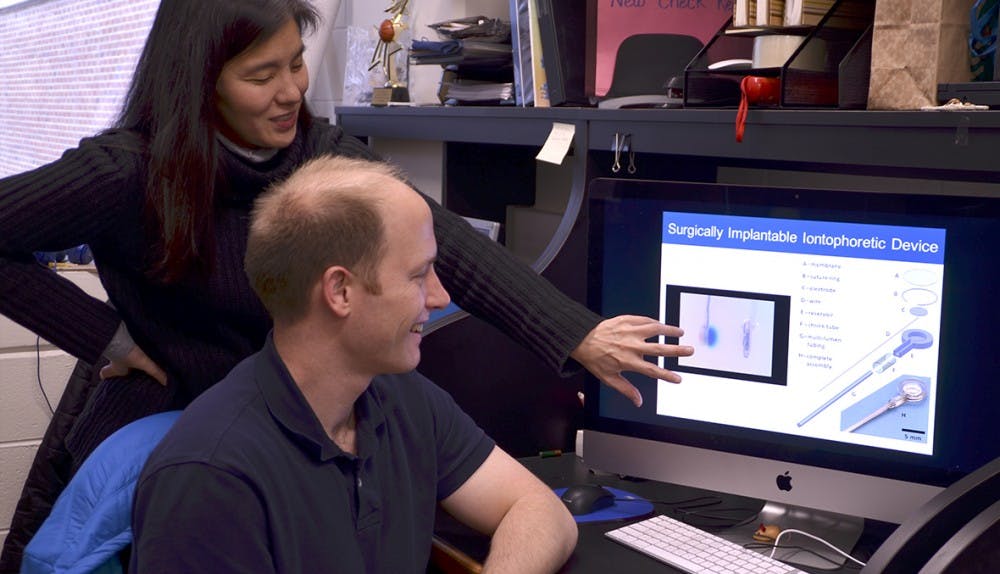DeSimone said the electric field drives drugs into tumors that are not easily treated through chemotherapy.
“Most chemo is delivered by an IV and it relies on a rich blood supply and many tumors have a rich blood supply, but some don’t,” DeSimone said.
DeSimone said pancreatic tumors and others are known for not getting much of a blood supply.
“When you give someone an IV, it ends up going everywhere in the body but the tumor and leads to all sorts of side effects,” DeSimone said. “So we use a device that applies an electric field across the tumor and the chemo follows the electric field line and into the tumor directly.”
Byrne said the device hasn’t been tested on humans yet, but they’ve seen success with small animals.
“There was a lot of success showing that we could deliver the drug locally and have very little circulation,” Byrne said.
DeSimone said they are working with human pancreatic tissue that’s growing inside of a mouse.
“We see tumor regression in an animal model that normally no one ever sees tumor regression in,” he said.
Jen Jen Yeh, another leader in the device’s development, said she hopes this device will increase the number of tumors that can be operated on.
“Maybe we can pinpoint where it is that we need essentially the biggest blast of drug to kill tumor cells and then get patients to a point where they can get surgery,” Yeh said.
Yeh said they are mostly finished with preclinical development with small animals.
“We are gathering interests and resources to be able to develop this in patients, but we’re probably still ... a few years away from putting this in patients,” Yeh said. “The goal is to put this in clinical trial as soon as we can.”
To get the day's news and headlines in your inbox each morning, sign up for our email newsletters.
While the device can be used to treat multiple cancers, DeSimone said it is one of the few solutions out there for pancreatic cancer.
“50,000 people a year get pancreatic cancer and about (41,000) people a year die from pancreatic cancer,” DeSimone said.
“There’s really no solution out there, and so we think this can improve survival and extend life in dealing with this very deadly disease.”
university@dailytarheel.com




